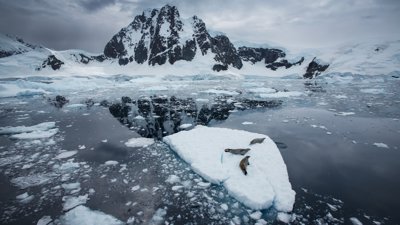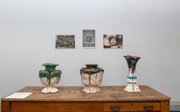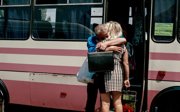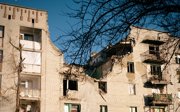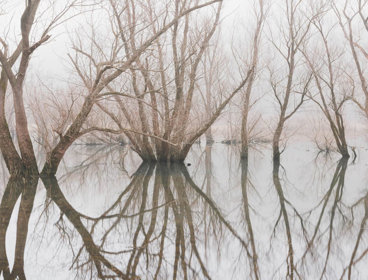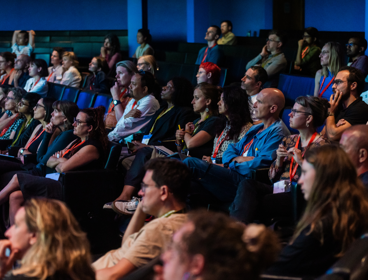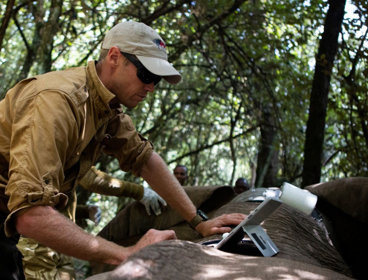In September, we held our first ever Summit Photo!
This three-day event sought to interrogate this question: How can photography address the global challenges of our time?
The Society has a long relationship with photography. Our Collections contain over half a million photographs, negatives, lantern slides and albums dating from around 1850, many of which demonstrate the power of an image to document, tell a story, and sometimes cause pain. Today, we see the power to cultivate a greater understanding of our planet’s people, places and environments, and to challenge and inspire.
Summit Photo was an opportunity to expand our horizons and take stock – exploring the potential of visual storytelling for addressing the environmental and humanitarian challenges of the modern world.
Together with Photoworks, the Royal Photographic Society and our official sponsor Rolex, we brought together internationally-renowned photographers, explorers, and policy experts, covering the worlds of photography, the arts, and non-profits.
Across the weekend, we enjoyed thought-provoking talks, panel discussions and exhibitions, offering a chance to reflect on salient issues and the role of photography within this.
Here are some of the weekend’s highlights, alongside images from the event captured by photographer and Earth Photo award-winner Zula Rabikowska.
Capturing Summit Photo
Kicking off bright and early on Friday morning, our very first talk was from Poulomi Basu, a BAFTA Breakthrough winner who addressed the act of making art in times of emergency, and its use as a form of soft rebellion and action. Through her poignant talk, Poulomi set the tone for a brilliant three days.
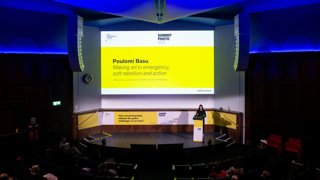
Friday’s programme also saw photojournalist Simon Townsley in conversation with photographer Marissa Roth. Together Simon and Marissa examined Simon’s career and the importance of shining a light on difficult subjects, including combat and poverty-stricken global regions.
On the future of photojournalism, Simon reflected on the importance of truth and trust, especially when working in challenging environments. “You cannot rely on images that are presented to you in the way that we used to because who knows how they were generated and where they come from...
"We need to send writers, photographers and broadcasters into the field who we can verify and trust, and whose experiences are validated and shared with us.”
He continued to explain that photojournalism has an irreplaceable value in its ethics, balance and ability to interpret context.
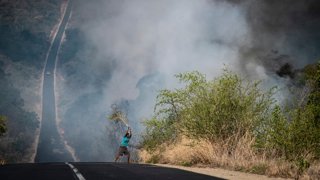
Across the weekend, the audience were invited to share thoughts, questions and reflections. Stimulating discussion was encouraged during lunchtime lectures led by curator Deborah Ireland on the early photographic Collections of the Society while artist Jack Ky Tan’s pots – created as an artistic response to pieces from the Society’s Collections – were displayed in the Sunley Room for all to enjoy.
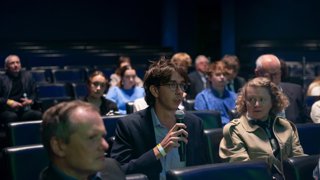
Closing Friday was a lecture delivered by environmentalist Chris Packham, a highly anticipated talk which received a standing ovation.
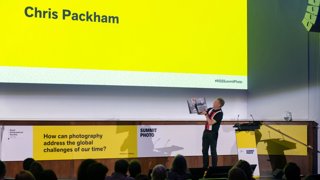
On Saturday, curator Helen Starr’s specially commissioned artworks were displayed in the Education Centre. Helen also presented on stage with fellow artists Jermaine Francis and Kinnari Saraiya.
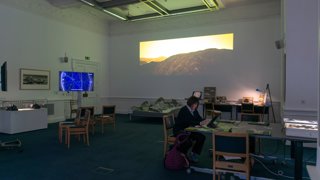
Back in the Ondaatje Theatre, National Geographic photographer Esther Horvath movingly reflected on her experience aboard the expedition which finally found Ernest Shackleton’s ship Endurance. Afterwards she spoke to his granddaughter, Alexandra Shackleton, who had been in the audience.
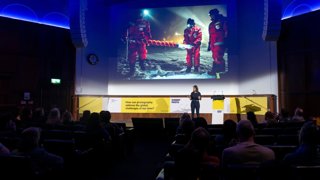
Anastasia Taylor-Lind, a British-Swedish photojournalist and poet reporting on issues related to women, war, and violence, shared her work capturing the impact of war in Ukraine as experienced by local people. The images were taken over several years, with Anastasia returning to the same communities and families to document how war can reshape the ordinary. In her lecture, Anastasia noted the importance of dedicating time to understand who someone is when you photograph them - this not only shows respect but allows an image to become a document.
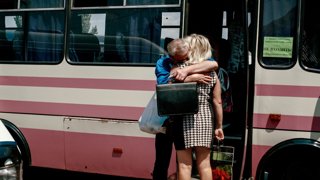
Saturday evening’s inaugural keynote was delivered by Frans Lanting on the power of story. One of our greatest living biosphere photographers, Frans interweaved his own stories with hard-hitting global topics. This sense of the personal as political was a central theme throughout the weekend.
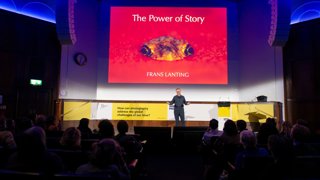
From conflict zones to the polar regions, our speakers shared a range of striking stories all illuminating the urgent issues of our time and inspiring us to see photography as a tool for change. Thanks to them for making the weekend so memorable!
The Society's curator of photography, Jamie Owen, commented: “We are delighted with the response to our inaugural Summit Photo. The response of those who spoke and that of the audience was wonderfully exciting and bodes incredibly well for 2026 and 2027 where we look forward to presenting strong speaker line-ups, challenging conversation and driving the reach of the event.”
Summit Photo will return next year. We hope to see you there!
